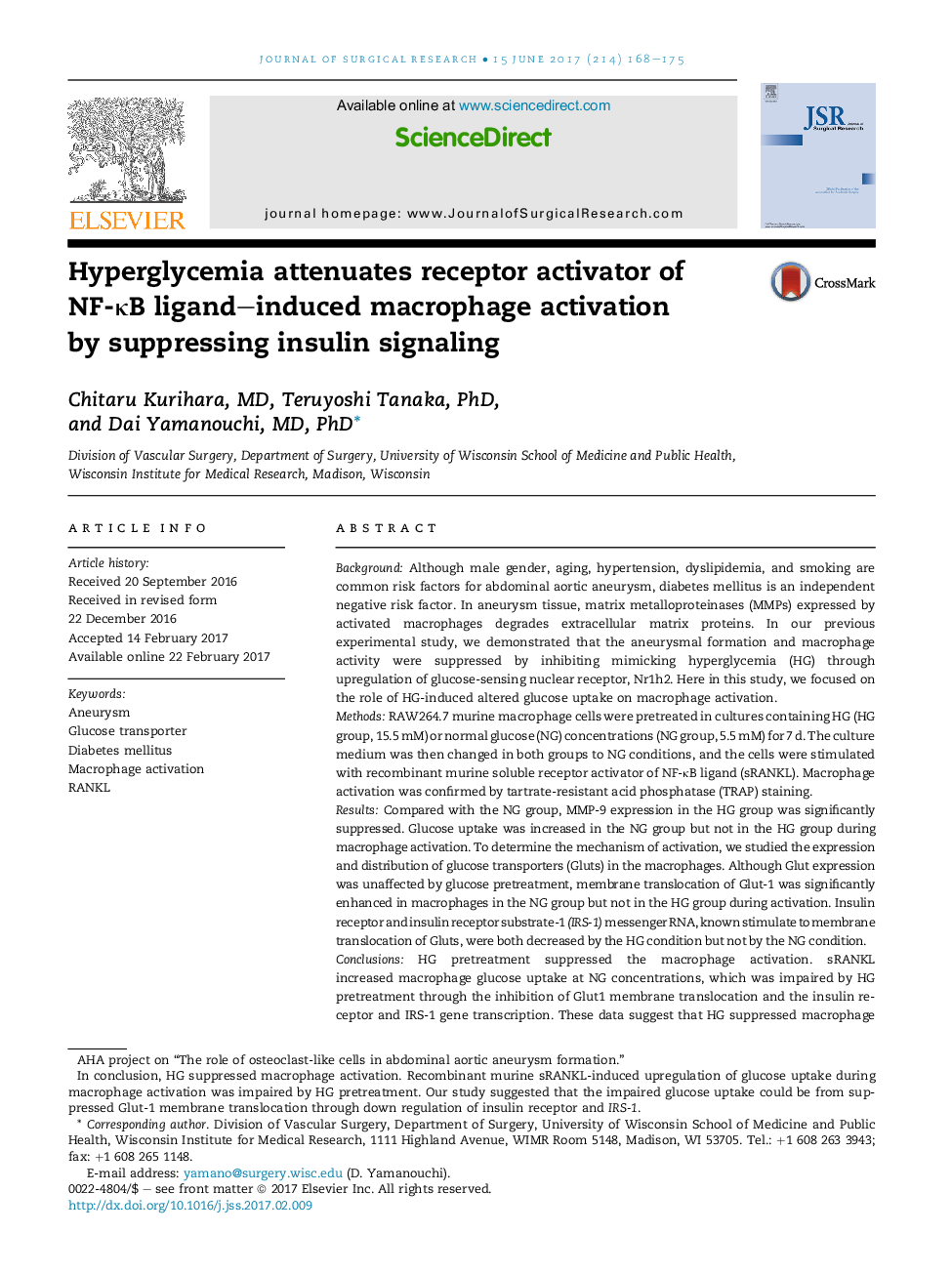| Article ID | Journal | Published Year | Pages | File Type |
|---|---|---|---|---|
| 5733800 | Journal of Surgical Research | 2017 | 8 Pages |
BackgroundAlthough male gender, aging, hypertension, dyslipidemia, and smoking are common risk factors for abdominal aortic aneurysm, diabetes mellitus is an independent negative risk factor. In aneurysm tissue, matrix metalloproteinases (MMPs) expressed by activated macrophages degrades extracellular matrix proteins. In our previous experimental study, we demonstrated that the aneurysmal formation and macrophage activity were suppressed by inhibiting mimicking hyperglycemia (HG) through upregulation of glucose-sensing nuclear receptor, Nr1h2. Here in this study, we focused on the role of HG-induced altered glucose uptake on macrophage activation.MethodsRAW264.7 murine macrophage cells were pretreated in cultures containing HG (HG group, 15.5 mM) or normal glucose (NG) concentrations (NG group, 5.5 mM) for 7 d. The culture medium was then changed in both groups to NG conditions, and the cells were stimulated with recombinant murine soluble receptor activator of NF-κB ligand (sRANKL). Macrophage activation was confirmed by tartrate-resistant acid phosphatase (TRAP) staining.ResultsCompared with the NG group, MMP-9 expression in the HG group was significantly suppressed. Glucose uptake was increased in the NG group but not in the HG group during macrophage activation. To determine the mechanism of activation, we studied the expression and distribution of glucose transporters (Gluts) in the macrophages. Although Glut expression was unaffected by glucose pretreatment, membrane translocation of Glut-1 was significantly enhanced in macrophages in the NG group but not in the HG group during activation. Insulin receptor and insulin receptor substrate-1 (IRS-1) messenger RNA, known stimulate to membrane translocation of Gluts, were both decreased by the HG condition but not by the NG condition.ConclusionsHG pretreatment suppressed the macrophage activation. sRANKL increased macrophage glucose uptake at NG concentrations, which was impaired by HG pretreatment through the inhibition of Glut1 membrane translocation and the insulin receptor and IRS-1 gene transcription. These data suggest that HG suppressed macrophage activation, through attenuation of glucose uptake via the suppression of the membrane translocation of Glut1 and insulin signaling.
